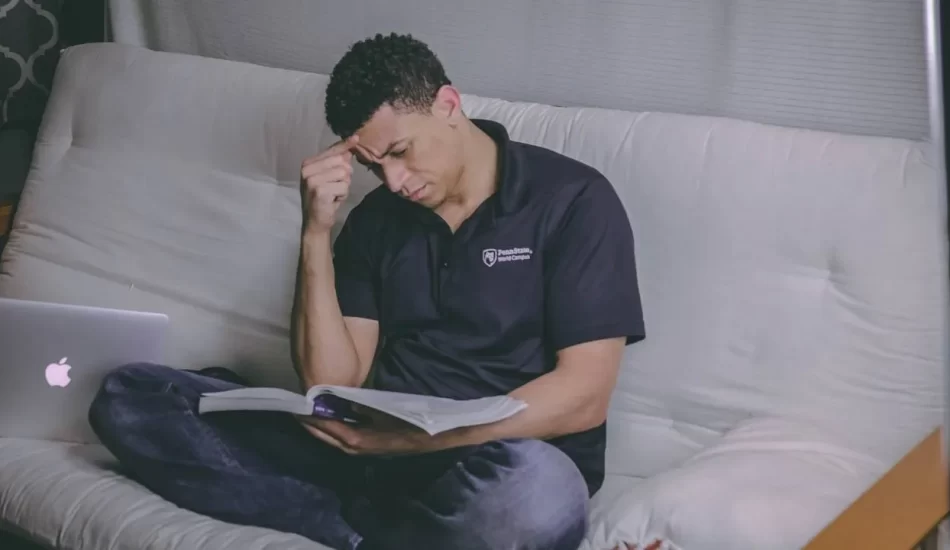Transition from a Student Visa to a Work Visa Smoothly with Us

Transitioning from a student visa to a work visa in the United States is a critical step for many international students seeking to establish their careers in the U.S. This process involves understanding various visa options, meeting specific requirements, and following timelines. This guide provides an in-depth overview of the steps and considerations for making this transition successful.
Understanding the F1 Visa and Work Eligibility
The F1 visa is a non-immigrant visa that allows foreign nationals to look at academic studies and language training programs in the United States. A common question among F1 visa holders is, can I work in the US with an F1 visa? Sure, but there are particular guidelines and limitations.
F1 visa holders can engage in limited on-campus employment, up to 20 hours per week during the academic term and full-time during breaks. Additionally, students may be eligible for Curricular Practical Training (CPT) and Optional Practical Training (OPT), which provide opportunities to gain work experience in their field of study.
Moving from F1 Visa to H1B Visa
The H1B visa is a popular choice for students transitioning from an F1 visa to a work visa. The H1B visa allows U.S. international workers to fill specialized positions in companies that need technical or theoretical knowledge. To transition from an F1 visa to an H1B visa, the following steps are normally involved:
- Find an H1B Sponsor: Secure a job offer from a U.S. employer who is prepared to support your H1B visa.
- File an H1B Petition: The employer must file a Labor Condition Application (LCA) with the Department of Labor and submit an H1B petition to the U.S. Citizenship and Immigration Services (USCIS).
- Wait for Approval: Upon approval of the petition, you can change your status from an F1 visa to an H1B visa.
Key Considerations and Requirements

Timing: The H1B visa has an annual cap, and petitions are normally submitted in April for the financial year starting October 1. This means planning is important.
ACWIA Fee: Employers are required to pay the American Competitiveness and Workforce Improvement Act (ACWIA) fee when filing an H1B petition. This fee varies based on the size of the employer.
Change of Status from H1B to F1: If you decide to look at further studies, you may need to understand the change of status from H1 to F1. This involves filing a new petition and meeting specific requirements set by the USCIS.
Can You Work on a Student Visa in the USA?
Yes, F1 visa holders can work under certain conditions. For example, students can work on-campus or participate in CPT and OPT programs. However, unauthorized employment can harm your visa status. It’s important to understand the rules regarding working in the USA with an F1 visa to avoid any issues.
Steps to Transition from a Student Visa to a Work Visa

Step 1: Complete Your Degree: Most students transition after completing their degree programs. Ensure you maintain your status and meet all academic requirements.
Step 2: Apply for OPT: Optional Practical Training (OPT) allows F1 students to work in their field of study for up to 12 months (or 24 months for STEM graduates). It’s essential to apply for OPT well before graduation to ensure timely authorization.
Step 3: Secure Employment and H1B Sponsorship: After obtaining OPT, the next step is to find a job in your field and ensure your employer is willing to sponsor your H1B visa. Not all employers sponsor H1B visas, so it’s important to discuss this during the job application process.
Step 4: File for H1B: Your employer will file the H1B petition, and you must wait for approval. The H1B visa process includes several steps:
- Labor Condition Application (LCA): The employer must file this with the Department of Labor.
- H1B Petition: Once the LCA is approved, the employer submits the H1B petition to USCIS.
Step 5: Maintain Status During Transition: If your OPT period ends before your H1B starts, you may qualify for the cap-gap extension, which allows you to maintain F1 status and work authorization until your H1B begins.
Frequently Asked Questions
Can F1 Students Apply for the Green Card Lottery?
Yes, F1 students can apply for the Green Card Lottery. However, winning the lottery does not guarantee a green card, and there are additional steps and considerations involved.
Can You Work on a US Student Visa?
Yes, but with restrictions. Understanding the rules for student visa work is essential to maintaining your status. Working without authorization carries serious repercussions, including deportation.
Work Permits for International Students in the USA
International students may need specific work permits to engage in off-campus employment. This includes OPT and CPT authorizations, which must be approved by the Designated School Official (DSO) and, in some cases, the USCIS.
Changing Status: F1 to H1B
Transitioning from F1 to H1B involves several steps:
- Secure Employment: Find a job in a specialty occupation. This is a critical first step, as the job must meet the criteria for H1B sponsorship.
- Employer Sponsorship: Ensure your employer is willing to sponsor your H1B visa. This often involves a great investment of time and resources on the part of the employer.
- Filing an H1B Petition: Your employer must file the necessary paperwork, including the LCA and H1B petition. This involves gathering and submitting various documents, such as your college degree, transcripts, previous I-20 forms, and passport.
The Importance of OPT and CPT

OPT and CPT are critical components of the F1 visa work options:
- OPT: Allows up to 12 months of work authorization (24 months for STEM fields) in your field of study. It’s divided into pre-completion and post-completion OPT, each with its own set of rules and regulations.
- CPT: Provides practical training opportunities while you are still enrolled in your program. This training must be directly related to your major and can be part-time or full-time, depending on your academic schedule.
The Transition from H1B to F1 and Vice Versa
While less common, some individuals may need to switch from H1B to F1. This often happens if they decide to look at further studies. The change of status from H1B to F1 involves filing a new petition with the USCIS and providing evidence of acceptance into an academic program.
Working in the USA with an F1 Visa: What You Need to Know
- Employment on-campus: During the academic term, up to 20 hours per week are permitted. This is the easiest employment option for F1 visa holders as it does not require additional authorization.
- Off-Campus Employment: Requires OPT or CPT authorization. This is more complex and involves approval from your DSO and, in some cases, USCIS.
- Unauthorized Employment: This can result in visa violations and potential deportation. It’s critical to follow strictly the employment conditions set by your visa.
The Role of USCIS in Visa Transitions

The USCIS is responsible for visa transitions, including student visas to work visas. Understanding their role and requirements is critical for a smooth transition. The USCIS processes applications monitors compliance, and provides resources to help students and employers understand the immigration process.
Conclusion
Transitioning from a student visa to a work visa in the United States is a complex process that requires careful planning and a thorough understanding of immigration laws. Whether you’re proceeding with the shift from F1 to H1B, exploring work permits like OPT and CPT, or understanding the various visa options, each step is critical to ensure a smooth and successful transition.
At Passage Law, we specialize in guiding students and professionals through their immigration journeys. Our experienced team is dedicated to helping you secure your work visa and achieve your career goals in the United States. Don’t deal with this complex process alone—let us provide the expertise and support you need. Consult us now.
